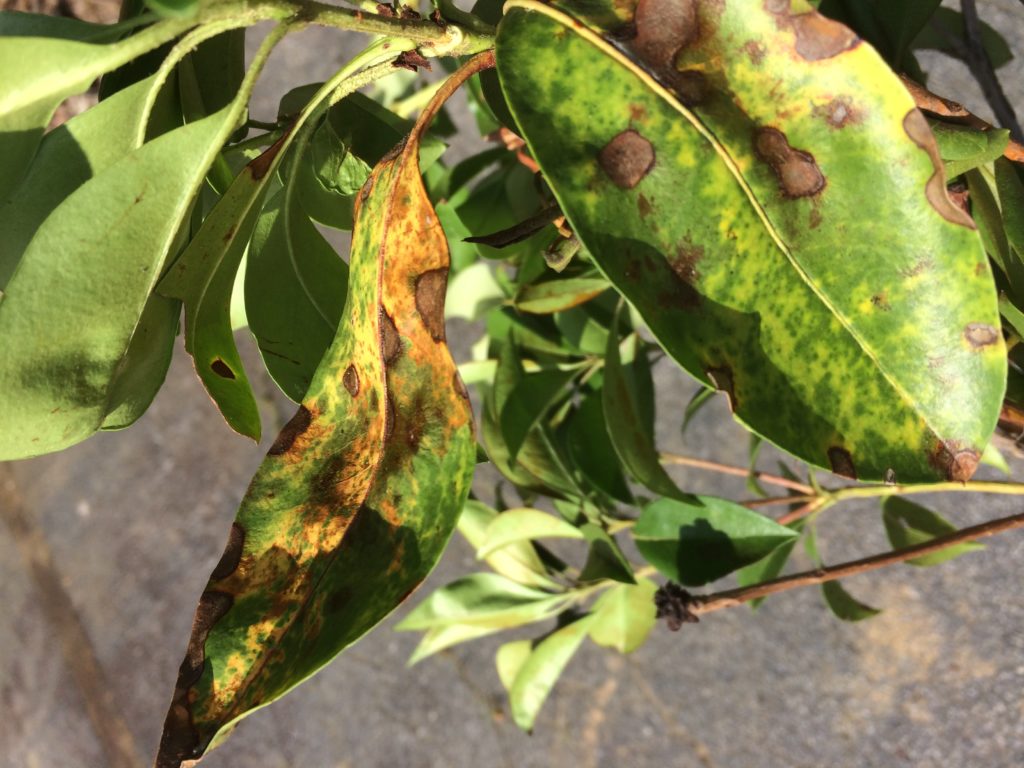Pest Alert – Mountain Laurel Leaf Blight
go.ncsu.edu/readext?470417
en Español / em Português
El inglés es el idioma de control de esta página. En la medida en que haya algún conflicto entre la traducción al inglés y la traducción, el inglés prevalece.
Al hacer clic en el enlace de traducción se activa un servicio de traducción gratuito para convertir la página al español. Al igual que con cualquier traducción por Internet, la conversión no es sensible al contexto y puede que no traduzca el texto en su significado original. NC State Extension no garantiza la exactitud del texto traducido. Por favor, tenga en cuenta que algunas aplicaciones y/o servicios pueden no funcionar como se espera cuando se traducen.
Português
Inglês é o idioma de controle desta página. Na medida que haja algum conflito entre o texto original em Inglês e a tradução, o Inglês prevalece.
Ao clicar no link de tradução, um serviço gratuito de tradução será ativado para converter a página para o Português. Como em qualquer tradução pela internet, a conversão não é sensivel ao contexto e pode não ocorrer a tradução para o significado orginal. O serviço de Extensão da Carolina do Norte (NC State Extension) não garante a exatidão do texto traduzido. Por favor, observe que algumas funções ou serviços podem não funcionar como esperado após a tradução.
English
English is the controlling language of this page. To the extent there is any conflict between the English text and the translation, English controls.
Clicking on the translation link activates a free translation service to convert the page to Spanish. As with any Internet translation, the conversion is not context-sensitive and may not translate the text to its original meaning. NC State Extension does not guarantee the accuracy of the translated text. Please note that some applications and/or services may not function as expected when translated.
Collapse ▲Pest Alert
Mountain Laurel Leaf blight is caused by the fungus Diaporthe kalmiae (Phomopsis kalmiae). The disease can be distinguished from other leaf spots by the larger, circular, brown lesions that often develop a zonate pattern.
The lesions frequently first appear near the margin or leaf tip, gradually enlarge, merge with other lesions, and result in the death of the entire leaf blade. The fungus may also spread from the leaf through the petiole into the twig, causing twig blight.
Leaf Blight is rarely serious enough to kill plants. We do not recommend treating these plants. The new leaves will often come out nice and the old leaves will eventually fall off.

Plants that suffered last year during the drought can be killed more easily.





